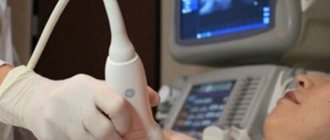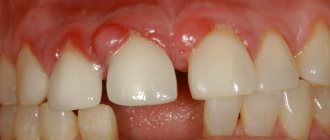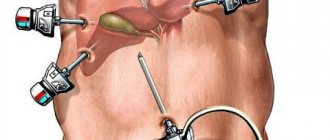The most common upper respiratory tract infections are infections of the lining of the nose (ie, rhinitis or “runny nose”), throat infections (pharyngitis), and infections of the voice box or larynx (laryngitis).
The first place where pathogenic microorganisms (usually viruses, and sometimes bacteria) settle is the nasopharynx area. The symptoms are almost always the same: sore throat, runny nose and cough. Rhinopharyngitis is the most common reason for consultation with general practitioners. This pathology is nothing more than a cold, which is an inflammation of the nasopharynx in adults and children and is mainly viral in nature. It is essentially an infectious disease that causes inflammation in the upper part of the throat and usually goes away on its own after 7 or 10 days. But what is it - nasopharyngitis?
General description of nasopharyngitis
Rhinopharyngitis (nasopharyngitis) - inflammation of the mucous membrane of the nasopharynx. It is a mild illness, most common in children aged six months to four years, but can also affect adults.
Rhinopharyngitis can be caused by more than 200 types of viruses, the most common are:
- rhinoviruses, which make up 30-80%;
- influenza viruses - 10-15%;
- adenovirus - 10-15%.
Nasopharyngitis caused by a rhinovirus is most contagious during the first three days after symptoms appear.
Most of these viruses are predominant in winter, but you can get nasopharyngitis at any time of the year.
And even if this is not a serious disease, it still needs to be treated correctly in order to get rid of it as soon as possible.
Rhinopharyngitis is mainly of viral origin, but can recur up to several times a year; in this case, it is necessary to look for an allergic cause: mites, pollen or animal dander.
Types of nasopharyngitis:
- catarrhal;
- atrophic;
- purulent;
- chronic;
- allergic;
- subatrophic rhinopharyngitis;
- rhinonasopharyngitis.
Factors that contribute to the development of nasopharyngitis include dry and damaged mucous membranes during cold periods, a suppressed immune system, stress, fatigue and an overall unhealthy lifestyle.
Causes of swelling of the nasal mucosa
Swelling of the nasal mucosa during a runny nose can be caused by the following reasons:
- Infection
. Infectious rhinitis is often caused by viruses and is part of the manifestations of ARVI. In the absence of proper treatment or the presence of predisposing factors, bacteria join the viruses, and the inflammation becomes purulent. - Violation of vascular tone in the mucous membrane
. Because of this, their inadequate expansion or contraction occurs1. The problem most often provokes is the abuse of vasoconstrictor drugs. - Allergic reaction
. This refers to allergic rhinitis, which occurs during the flowering period of plants. Less often it is provoked by: dust, animal hair. - Traumatic injury
. Swelling occurs almost immediately after injury, and the timing of its disappearance varies from person to person4. - Adenoids
. Enlargement of the nasopharyngeal tonsil contributes to swelling and congestion in childhood1.
Symptoms and first signs
The incubation period is quite short, amounting to 16 hours after infection enters the body.
Initial symptoms are mild fatigue, a feeling of cold, sneezing and a slight headache, they soon develop into nasopharyngitis with a stuffy nose, nasal discharge, sore throat and low-grade fever, peaking at 2-4 days.
During the incubation period, the first symptoms of nasopharyngitis appear, namely:
- unusual and unexplained fatigue occurs;
- fever appears, rarely exceeding 38.5 degrees;
- runny nose, first clear, then thick (yellowish to greenish);
- nasal congestion, which may be accompanied by shortness of breath;
- mild sore throat and redness;
- fairly dry cough;
- sneezing;
- ear pain;
- tearfulness;
- the body “aches”;
- headache and/or abdominal pain;
- loss of appetite.
Fever lasts two or three days in the case of nasopharyngitis. To reduce your fever, you can take paracetamol at recommended doses at least 6 hours apart.
Introduction
According to WHO, respiratory diseases are one of the most common forms of pathology, accounting for up to 60% in the morbidity structure of the planet's population [1].
The mucous membrane of the nasopharynx, which is in direct contact with a variety of environmental objects, is one of the most vulnerable places for both infectious and non-infectious lesions. Based on the nature of the disease, there are two main forms of the disease: acute and chronic. Classification of nasopharyngitis by severity is possible depending on the level of temperature and the severity of general nonspecific symptoms.
Acute nasopharyngitis
Acute nasopharyngitis (ANF; J00 according to ICD-10) in children is one of the forms of acute respiratory viral infection (ARVI) [2]. To date, more than 200 viruses that cause acute respiratory viral infections have been described [3]. The most common causes of the disease are rhinoviruses, less common are corona, adeno-, myxo- and paramyxoviruses. Relatively rarely in adults (in children much more often), respiratory syncytial virus (RSV), Coxsackie and ECHO viruses, and representatives of the Herpesviridae family become causative agents of ARVI [4]. The figure shows the frequency of isolation of various respiratory viruses during ARVI in children [6].
RNF (runny nose) annually affects almost every resident of Russia, regardless of age [3]. This is due both to the high contagiousness of pathogens and to the diversity of their species composition (parainfluenza viruses, influenza viruses, adeno-, rhino-, enteroviruses, etc.). A particular problem is the continuous new strain and speciation formation due to the genetic lability of many pathogens [3]. Representatives of the Herpesviridae family can contribute to the chronicization of the process, protracted and/or complicated course of ANF [4]. Simultaneous co-infection with several pathogens leads to a more severe course of ANF (see figure).
Despite the fact that various viral agents are considered as priority causative agents of nasopharyngitis, bacterial flora can be the primary cause of the disease and also complicate the course of a viral infection. The most common bacterial agents that cause nasopharyngitis are Streptococcus pneumoniae, Streptococcus pyogenes, Haemophilus influenzae and Moraxella catarrhalis [4].
In young children, streptococcal ANF is associated with high fever, intoxication, severe rhinorrhea, and cervical lymphadenitis [7]. Bacterial complications when a foreign body enters can also be caused by microorganisms Prevotella, Fusobacterium, Peptostreptococcus, whose activity is associated with less severe symptoms [7].
Viral infection during ARVI can “pave the way” for subsequent bacterial infection [8]. According to our data, pathogenic microflora in preschool children with recurrent nasopharyngitis was detected in a significant titer in 6.3% of cases (22/352) [5], while the prescription of antibacterial therapy was accompanied by positive dynamics. Anatomical and morphological features of the nasopharynx, prolonged exposure to exogenous factors (dry hot air, dust, etc.), abuse of decongestants, allergic diseases, vitamin A deficiency, various somatic diseases, disorders of microbial homeostasis, etc. [8] can contribute to the chronicity of the process, often with the activation of opportunistic flora.
The incubation period for most ARVIs is 2–7 days. Maximum virus release occurs on the 3rd day after infection (this period is characterized by the most pronounced symptoms), sharply decreases by the 5th day of the disease (appearance of virus-specific IgM), although in some patients its low-intensity release can persist for 2 weeks (up to achieving a titer of virus-specific IgG sufficient to eliminate the pathogen) [2].
The leading symptom complex of ARVI is catarrhal inflammation of the respiratory tract. Moreover, the development of symptoms is not so much a consequence of the damaging effect of the pathogen on epithelial cells, but rather the result of their desquamation and the reaction of the immune system, primarily factors of innate immunity. The synthesis of pro-inflammatory cytokines (interleukins-1, -6, -8, etc.) is responsible for the development of a pyrogenic reaction in infectious diseases, the induction of a systemic and local inflammatory response, and a direct relationship is shown between the level of secreted cytokines and the severity of symptoms [9]. An increase in nasal secretion during ARVI is associated with an increase in vascular permeability and hypersecretion of mucus, and clouding of the nasal secretion and the possible appearance of a yellowish or greenish tint is associated with the migration of activated leukocytes to the site of the reaction. These symptoms do not necessarily indicate the addition of bacterial flora and the need for antibiotics [2]. Despite the participation of immune mechanisms in the development of clinical symptoms of ARVI, they should be considered as a pathogenetic, but not a pathogenic factor, and efforts should be made to ensure the normal functioning of the immune system during the disease.
Despite the similarity of the clinical manifestations of ARVI of various etiologies, there are features of the clinical course of influenza, RSV infection, etc. The onset of the disease is acute or subacute, with influenza - with a sharp sudden deterioration of the condition; fever during influenza and adenovirus infection is high, long-lasting, and during RSV infection it may be absent altogether; symptoms of intoxication are most pronounced with influenza, somewhat less so with adeno- and RSV infections, and with the most common one - rhinovirus - they may be completely absent; on the contrary, nasal symptoms are most pronounced in the latter case, as well as with adenoviral etiology of the disease; with influenza, parainfluenza and RSV infection, a dry cough dominates (with or without a broncho-obstructive component); lymphadenitis is characteristic only of ARVI of adenoviral etiology [10].
Complications of ANF develop rarely and are usually associated with bacterial flora. They are observed in 1–5% of children with ARVI and usually occur already on the 1st–2nd day of the disease; in the future, superinfection may occur [2, 11]. With regard to the presence of a bacterial infection, the persistence of febrile temperature for more than 3 days in the absence of influenza and adenoviral infection, persistence of nasal congestion for more than 1–14 days, the appearance of pain in the face, painful “clicks” in the ear area in young children and a feeling of stuffiness in older children should be alarmed. seniors; We should also not forget about the possibility of developing pneumonia, incl. “mute” [11].
The main cause of chronic nasopharyngitis (CNF), like ANF, is respiratory viruses, however, local immunocompromise, which underlies the chronicity of the process, contributes to more frequent activation of opportunistic infections and/or the addition of bacterial flora.
Despite the fact that representatives of the Herpersviridae family are considered rare pathogens of nasopharyngitis, according to our data [5], 121 of 352 preschool children with recurrent symptoms of nasopharyngitis were diagnosed with monoinfection with cytomegalovirus (64/121; 52.9%), Epstein–Barr virus ( 38/121; 31.4%), herpes simplex virus (10/121; 12.0%) and herpes virus type 6 (5/121; 4.1%) with the presence of IgG to these pathogens, in 14 of Markers of ≥2 herpesvirus infections were determined in 352 children.
Chronic nasopharyngitis (CNF)
The clinical picture of CNF is usually characterized by catarrhal symptoms in the nasopharynx, accompanied by nasal congestion, rhinorrhea, prolonged dry non-productive cough, discomfort or sore throat, with no or minimal systemic symptoms.
Diagnostics
Diagnosis of ARVI is based on clinical and epidemiological data, results of instrumental and laboratory examinations [2, 12, 13]. The purpose of the laboratory examination for ARVI was to search for bacterial foci in children that were not determined by clinical methods, incl. when the course of comorbid pathology worsens, if present.
A clinical blood test in adults is a mandatory test for acute respiratory viral infections (normocytosis and accelerated ESR are typical); for children it is advisable only in cases of severe general symptoms with fever [2, 12, 13].
Clinical urine analysis (in the case of an uncomplicated course of ARVI there should be no changes in it) in adults remains a mandatory method of investigation; it is recommended for children to carry it out in the presence of fever without catarrhal phenomena [2, 12, 13].
Determination of the level of C-reactive protein is recommended to exclude severe bacterial infection in children with febrile fever (fever above 38 ° C), especially in the absence of a visible focus of infection (85% probability if C-reactive protein level > 30-40 mg/l ) [2].
Routine virological and bacteriological studies are not currently recommended, with the exception of a rapid test for influenza in patients with high fever and a rapid test for streptococcus in cases of suspected acute streptococcal tonsillitis. Microbiological testing is indicated when first-line or even second-line empirically prescribed antibacterial therapy is ineffective. When the sinuses are involved in the pathological process, the ideal material for research is aspirate or lavage water from the sinus cavity; a smear from the middle nasal meatus or nasopharynx in such cases does not always provide reliable information [14, 15].
Instrumental studies (radiography of the chest organs in case of suspected pneumonia, radiography of the paranasal sinuses in case of suspected development of sinusitis; ECG in the presence of cardiac symptoms) are not performed for uncomplicated ARVI. Children with symptoms of ARF are not recommended to undergo x-rays of the sinuses in the first 12 days of illness.
Consultation with an otorhinolaryngologist and otoscopy are recommended for children in all cases of ARVI. In case of severe/moderate disease or refusal of hospitalization, consultation with an infectious disease specialist is recommended. On the contrary, with CRF, in addition to clinical, anamnestic and objective examination data, a culture of a smear from the nasopharynx is indicated to determine the etiologically significant microflora (bacterial, fungal) or the determination of DNA in the smear of representatives of the Herpesviridae family (herpes simplex virus, herpes virus type 6, cytomegalovirus, virus Epstein–Barr) [3].
Assessment of the immune status in patients with nasopharyngitis, as a rule, is not required, but consultation with an allergist-immunologist is advisable, since at least half of children with CNF are diagnosed with allergic rhinitis [5].
It is important to emphasize that nasopharyngitis is one of the common causes of polypharmacy, excessive prescription of diagnostic and therapeutic procedures, and the use of drugs with unproven effectiveness or off-label indications [2, 16, 17].
Treatment
The basis of treatment for ANF is symptomatic and elimination therapy in order to dilute secretions, remove mucus, restore patency of the nasal passages, incl. using decongestants (up to 12 years only topical).
Unfortunately, the possibilities of antiviral therapy for ARVI are currently limited. Specific etiotropic therapy (zanamivir, oseltamivir) is available and absolutely justified only for influenza and should be prescribed as early as possible; Neuraminidase inhibitors have no effect on other viruses.
In other cases, no later than the 1st or 2nd day of illness, the advisability of prescribing drugs of the interferon-α group (nasal forms, rectal suppositories) or interferonogens can be considered, although there is no reliable evidence regarding their effectiveness [2, 11].
Antibacterial drugs are usually not used in the treatment of nasopharyngitis. If the disease has a viral etiology, antibiotics may be indicated only in cases of immunodeficiency with a risk of developing a bacterial process, as well as in chronic lung pathology. If the role of the bacterial flora is proven, topical forms of antibacterial drugs, D3, herbal remedies, homeopathic remedies, etc., which fall into the category of drugs with unproven effectiveness, can also be used.
Diagnostics
When exactly should you go to the doctor?
- if the child is less than three months old;
- if the fever lasts more than 72 hours and does not decrease;
- if there is pain in the ear;
- if there are spots on the skin;
- if there is bleeding from the nose or urine with blood elements;
- if the child has breathing problems.
The diagnosis of nasopharyngitis is clinical, that is, it is established by examination and observation of symptoms. Does not require additional examination. A thorough clinical examination will eliminate the complication or associated pathology, such as otitis media, and evaluate possible risk factors.
If you see an otolaryngologist (ENT), he or she may perform a rhinoscopy to examine the inside of the nose using a rhinoscope, a rigid or flexible optical device. In the case of nasopharyngitis, rhinoscopy shows a very red and congested mucous membrane of the nose and throat.
Hypertrophic pharyngitis
For hypertrophic pharyngitis
The patient's complaints are similar to those with the catarrhal form of the disease, but in this case
there is more mucous discharge and it is more viscous
, which causes discomfort, since it is necessary to constantly cough up, which can provoke an attack of vomiting.
With this type of pharyngitis, there are lymphoid accumulations (groups of follicles) on the mucous membrane of the pharynx, which are pronounced.
In case of large accumulation and increase in size, these follicles turn into granules, and the disease is designated as granulosa chronic pharyngitis.
For hypertrophic pharyngitis, alkaline gargling is also recommended; inhalations with essential oils of medicinal herbs (sage, chamomile and eucalyptus) are also useful.
Hypertrophic granulosa pharyngitis
has a characteristic symptom - a tickling sensation in the throat, its other symptoms are similar to those of hypertrophic pharyngitis.
Treatment of granulosa pharyngitis
can be therapeutic and surgical
Therapeutic
– similar to the treatment of catarrhal chronic pharyngitis.
Surgical
the intervention is carried out using a radio wave or laser beam. During surgery, the granules themselves are removed, but to completely cure the pathology, therefore, after removal of the granules, drug treatment is still required.
The patient should stop smoking.
How to treat nasopharyngitis
Rhinopharyngitis usually goes away on its own. Treatment is aimed at limiting cold symptoms while keeping the patient comfortable and avoiding overexertion if necessary.
The following measures are prescribed:
- regular rinsing of the nasal sinuses (with saline, nasal spray, thermal or sea water);
- taking painkillers for pain and antipyretics for fever.
In the first days, a cough due to nasopharyngitis is often dry and painful, then people often wonder how to treat it. In this case, you can, on the doctor's recommendation, buy cough syrup. But be careful: as soon as the cough becomes wet and accompanied by mucus, syrups should be avoided. Because a wet cough helps evacuate germs. Cough is an excellent natural treatment for nasopharyngitis.
Also, keep in mind that a fever is just an expression of the body fighting an infection. In fact, viral infections of this type are often “self-limiting,” meaning that they will heal on their own. However, it is important to monitor your temperature and make sure it is not too high to prevent febrile seizures.
Contrary to what many parents believe, antibiotics do not help fight viral infections. Thus, treatment of nasopharyngitis consists of controlling symptoms. In some cases, antihistamines may be used to relieve allergies, antitussives to relieve coughing, or expectorants to help clear secretions. Antipyretics also help control fever.
Rhinopharyngitis usually lasts about 7-10 days. During this period, it is important to give the body sufficient rest. The healing process can be supported by keeping the mucous membrane moist, drinking enough fluids, or using inhalations and decongestants.
Complications of nasopharyngitis
The risk of complications increases without treatment or when the body cannot heal itself. On the one hand, viruses in the respiratory tract will multiply, infecting areas that are still healthy, and on the other hand, nasopharyngitis can pave the way for bacterial superinfections. Superinfection is when a viral infection sets the stage for a subsequent bacterial infection due to a weakened immune system. If your general health does not improve or your symptoms worsen, you should see your doctor as soon as possible.
Rhinopharyngitis rarely causes complications, but some people with weakened immune systems may experience a secondary bacterial infection in the form of:
- tonsillitis (inflammation of the tonsils of viral or bacterial origin);
- laryngopharyngitis;
- tracheitis (inflammation of the trachea, causing an irritating cough);
- bronchitis (inflammation of the bronchi, which usually manifests itself in the form of cough and difficulty breathing);
- sinusitis (inflammation of the sinuses associated with an infection of viral or bacterial origin);
- otitis (inflammation or infection of the ear);
In this case, consultation is necessary, as well as treatment with antibiotics if a bacterial infection is proven.
In children under 3 months of age, complications occur more often due to insufficient maturation of the immune system. Therefore, in this case, as in pregnant women, with constant fever, careful monitoring of the condition is necessary.
Traditional treatment
Treatment with folk remedies will help improve your condition and maintain your health.
- Using a humidifier. To thin out secretions, it is recommended to humidify the surrounding air and maintain the room temperature to 19 degrees.
- Inhalation of eucalyptus essential oils.
It is necessary to do inhalations so that it has a decongestant effect, helping to clear a stuffy nose. Essential oils can also be used in chest massage. But remember that treating colds with essential oils is contraindicated for children, pregnant or lactating women, patients with asthma or epilepsy. Consult your doctor before use. - Elder. Has antipyretic and anti-edematous effects. This plant can be used as an herbal tea (let steep for at least 10 minutes) or as a gargle (with cooled herbal tea) several times a day.
- Chamomile. For children, a runny nose can be very uncomfortable because it prevents them from breathing, causing them to be irritable and may lose their appetite. In these cases, it is best to resort to homemade solutions prepared with the addition of salt or chamomile.
Rhinopharyngitis can be treated well with folk remedies if you follow the above steps and know how to treat it.
Incidence (per 100,000 people)
| Men | Women | |||||||||||||
| Age, years | 0-1 | 1-3 | 3-14 | 14-25 | 25-40 | 40-60 | 60 + | 0-1 | 1-3 | 3-14 | 14-25 | 25-40 | 40-60 | 60 + |
| Number of sick people | 0 | 0 | 10 | 25 | 25 | 25 | 25 | 0 | 0 | 10 | 25 | 25 | 25 | 25 |
Prevention
There are several rules to strengthen your immune system and prevent disease.
- Wash your hands often and teach your children to do it correctly, especially after blowing their nose.
- Do not share personal items such as glasses, dishes, or a sick person's towel.
- Protect your mouth when you cough or sneeze with a disposable tissue. If you don’t have a disposable tissue, cough into the crease of your elbow rather than into your palm.
- Don't overheat the house, keep the room temperature between 18 C and 20 C to keep the air humid. Too dry air makes symptoms worse.
- Ventilate the room regularly, even when it’s cold.
- Get enough sleep and avoid stressful situations.
- Consume vitamin C and honey daily in preventative doses.
Good to know! Rhinopharyngitis remains contagious for a long time, in some cases up to 21 days.
Possible causes of sinusitis
- Untreated colds: 5 to 10% of neglected colds turn into sinusitis.
- Dental procedures and untreated oral infections because the maxillary molars and premolars are located close to the maxillary sinuses.
- Congenital or traumatic anatomical anomalies: deviated septum, too narrow nasal passage, nasal polyps (often of allergic origin).
Therefore, specialists who can help with rhinosinusitis include: ENT doctors, therapists, dentists and plastic surgeons.
It should be noted that during treatment for acute or chronic sinusitis, you may begin to feel better after taking antibiotics, but sometimes symptoms worsen and additional treatment and even hospitalization may be required. In order to effectively combat sinusitis, it is necessary to first eliminate the underlying disease - a cold, dental caries, or, if necessary, perform rhinoplasty, surgical correction of the nasal septum (septoplasty), polypectomy, etc.
In the case of acute sinusitis, the disease usually lasts up to 4 weeks. Two-thirds of people with acute sinus inflammation improve without any treatment. If your doctor has reason to believe that the sinus infection is caused by bacteria rather than viral agents, you will be prescribed antibiotic therapy. The number of days you take an antibiotic depends on the type of antibiotic and the severity of the infection. When you take an antibiotic, you should take it until the end of the prescribed treatment period, even if you feel better, otherwise the infection may not be completely cured and the microbes will have the opportunity to develop resistance to the medicine.
With chronic sinusitis , the illness usually lasts 12 weeks or longer. Chronic sinusitis is more difficult to treat and responds more slowly to antibiotics than acute sinusitis. Treatment of chronic sinusitis will require a long course of antibiotic therapy. You may be prescribed more than one antibiotic. In complex treatment, it may be necessary to prescribe a nasal spray with corticosteroids, which reduces inflammation and swelling of the mucous membrane of the nasal passages.
People with impaired immune system function and those taking immunosuppressive drugs (for example, long-term therapy with glucocorticosteroids) have an increased risk of chronic sinusitis caused by atypical and fungal pathogens. The peculiarity of fungal sinusitis is that it does not respond to treatment with antibiotics and may require the prescription of antifungal drugs, corticosteroids, or surgical treatment. Surgery may be indicated if you have been taking antibiotics for a long period of time but symptoms still persist or complications have developed (for example, a bone infection in the face).








